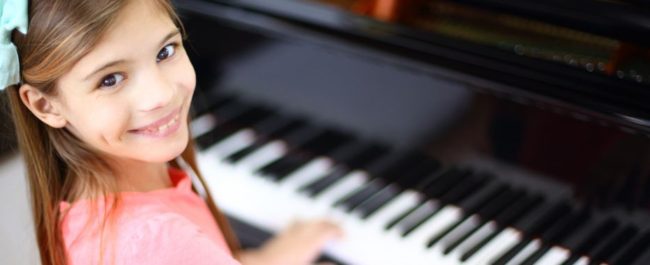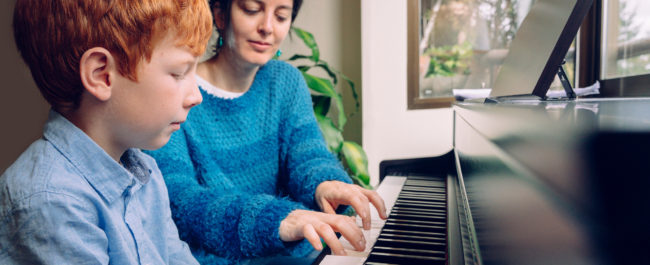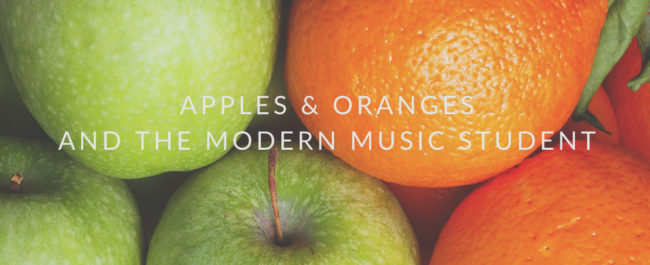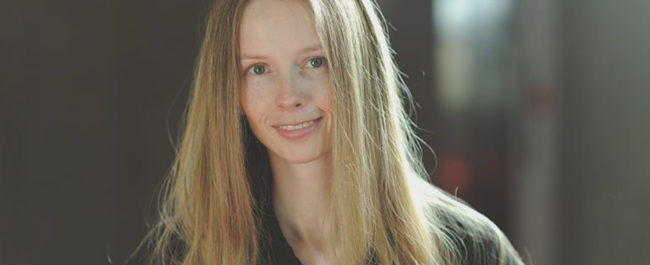A Musicians Guide to Improvement 1% at a Time
Whether you are supporting a young musician or hoping to build your own musical enjoyment this year, you’ve probably figured out that time at your instrument is a huge factor in improvement, which brings about success and builds further enjoyment.
If you can get 1% better each day for one year, you’ll end up 37 times better by the time you’re done. - James Clear, Atomic Habits
What if instead of a major cram session before you / your child’s next lesson, you were able to build in small shifts that would accumulate in great gains by the end of this year?
Here are some ideas to get you started – just 1% at a time.
Your Set Up
Don’t underestimate the value of honing your set-up as a fun first step in brainstorming for success.
Can you improve your setup this year?
- Are your seated comfortably and at a correct distance?
- Does your young learner have a foot stool if their feet are dangling?
- Is your sheet music flying around or secure in a binder or notebook?
- Have you downloaded music to have it easily accessible?
- Do you have a music stand at the correct height?
- Is your instrument in tune or do you know how to tune properly?
- Are online learning apps up-to-date?
- Are you using the biggest device possible for online lessons?
Technique
Improving your technique can save you time and build healthy foundations that will save you time and keep you healthy for a lifetime of musical enjoyment.
Can you improve your technique?
Set a small goal to check in with your technique in each practice.
Technique is your physical approach to the instrument and can also include things like scales, chords, how you hold your drumsticks, your balance on the piano bench, how you hold your cello or working to not fold your body over your Ukulele or it may be the ways that you warm up your vocal cords as you start your practice.
Have questions? Your teacher is there to help you!
Rhythm is the BOSS
One of my college teachers was on a mission to prove that for every musician, rhythm is the boss! What do you think?
Can you improve your rhythm this year?
Beat is that steady inner pulse that controls your overall tempo and is another great aspect to work on. In its simplest from, rhythm is ‘the way the words go’ and a solid understanding of rhythm will inform the security of your pieces.
You can see 1% improvements daily by pausing before you begin to analyze rhythms, check for understanding to see if you / your child are understanding the rhythms in front of them and by targeting problematic rhythms in your pieces – even before you start to play.
Rhythm is also fun to do on the move and you can build tools for rhythmic success by tapping to music you hear, clapping words and moving to the beat. Young students can tap rhythms before they start to play or have fun writing rhythms of their own!
Make Music
Set some micro-goals as you start your practice!
What piece are you working on?
What can you work on to see improvement in each practice?
Note Reading
Do you feel secure?
Can you work on a single measure to improve your note reading confidence? This can happen while playing or before you touch your instrument.
Listening
What are the sounds you are hoping to create in this practice. Can you listen with more intention to the dynamics, music phrases or see if you can tell a story through the music you are playing?
Play Music You Love
Do you have a piece on your ‘goal list’ this year or perhaps you are ready to set an exam goal or want to finish the lesson book you are working through?
Be sure to chat with your teacher about your goals and check-in from time to time if they are shifting – your teacher will be excited to hear of your musical plans and can help you set goals for this year – perhaps your most musical one yet!








